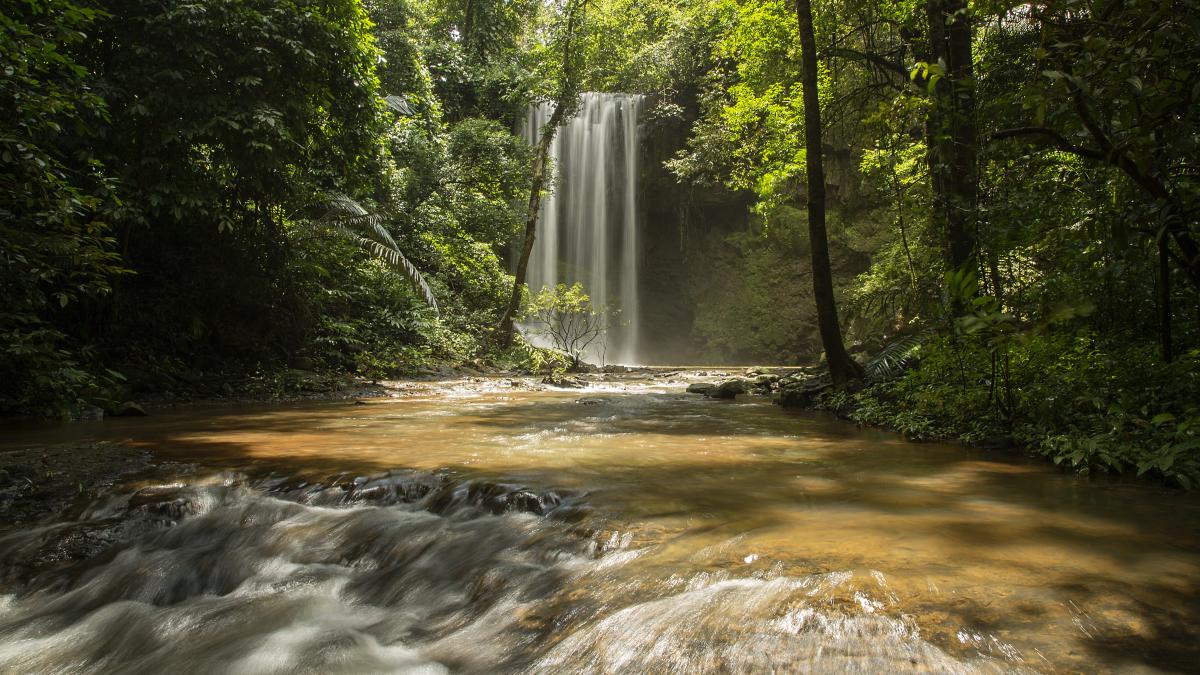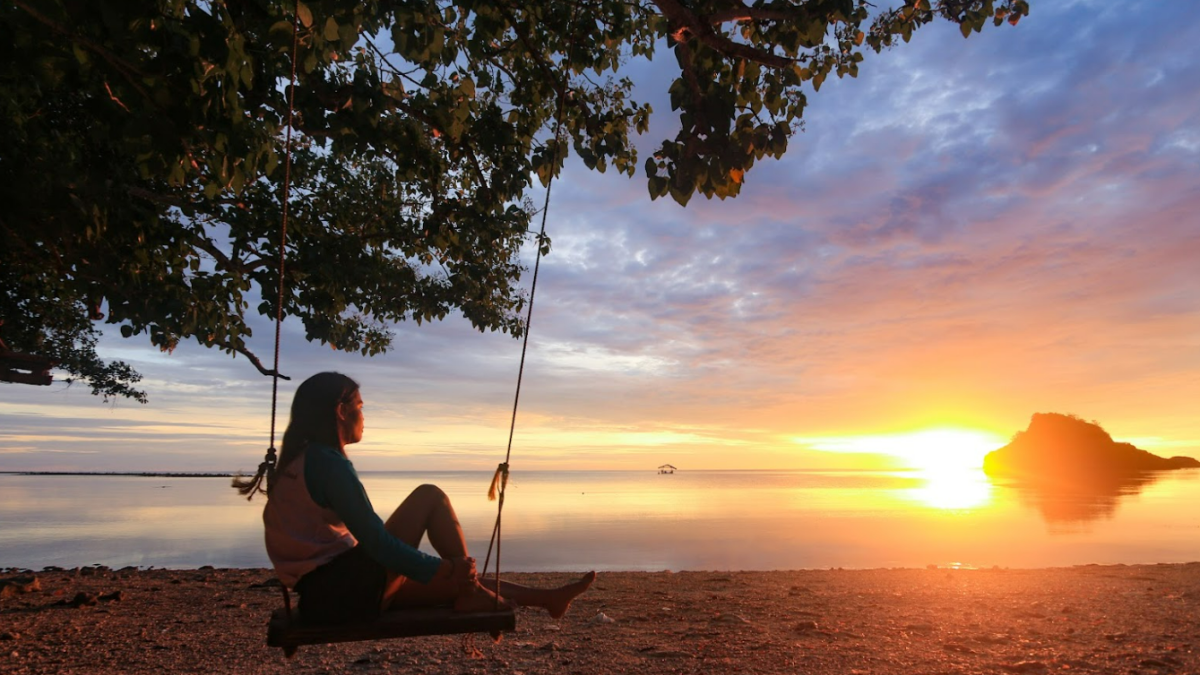Cambodia is endowed with a rich natural resource base, including diverse and productive inland fisheries. This resource base, essential for livelihoods and food security, is threatened by changing climatic conditions.
Cambodia’s vulnerability to climate change is exacerbated by persistent poverty and extensive low-lying floodplains. Rising temperatures and shifting rainfall patterns—coupled with hydropower development and land use changes across the Mekong basin—threaten agriculture and fisheries that millions of Cambodians depend on for food security and nutrition. More than 40 percent of Cambodia’s total greenhouse gas emissions in 2020 were from land-use change, including deforestation and forest degradation. Agriculture was the second-highest emitter—with methane from rice production being the predominant greenhouse gas released by this sector— followed by energy, industrial processes, and waste management.
Government of Cambodia Priorities
The Royal Government of Cambodia is committed to combating climate change and advancing a climate-resilient, low-carbon, sustainable development path, and aspires to achieve net-zero emissions by 2050. As a party to the United Nations Framework Convention on Climate Change, Cambodia ratified the Paris Agreement and outlined Nationally Determined Contributions (NDCs) that set mitigation targets, adaptation actions, and climate policies aligned with national priorities. Additionally, Cambodia signed the Global Methane Pledge to contribute to global methane reduction goals. Key goals related to mitigation and adaptation under Cambodia’s updated NDC from 2020 include:
- Reducing greenhouse gas emissions by nearly 42 percent (64.5 metric tons of CO2 equivalent) by 2030;
- Achieving 60 percent forest cover by 2030;
- Attaining 25 percent renewable energy (including solar, wind, hydro, and biomass) by 2030;
- Supporting 100,000 local farmers transition to climate-smart agriculture by 2026;
- Training 60 percent of elementary and secondary school teachers to incorporate climate change into lesson plans; and
- Assessing the climate vulnerabilities of 100 percent of cities and urban areas by 2050
USAID’s Climate Change Program: Objectives and Results
USAID supports the people of Cambodia in conserving natural resources, adopting climate-smart agricultural practices, combating vector-borne diseases, and enhancing the climate resilience of vulnerable communities. USAID programming aligns with development and climate priorities through a series of activities in health, climate adaptation, and natural climate solutions.
In 2024, the Green Climate Fund (GCF) approved investment in the Cambodian Climate Finance Facility. USAID supported the development of the $100 million debt facility, which will provide financing for businesses in Cambodia that are focused on climate adaptation and mitigation outcomes. This facility, which unlocks local finance and is also supported by the Korean Development Bank, is also the first nationally-focused climate investment vehicle capitalized with GCF funding to be approved and launched in Asia.
Adaptation
USAID is helping Cambodians become more resilient to climate change by enhancing soil and water management through the promotion of composting and irrigation technologies, diversifying agricultural production with new crops and varieties, and improving farmers’ and agribusinesses’ access to markets and finance. Additional adaptation-related efforts focus on creating opportunities for private sector engagement, reducing post-harvest losses, and increasing food safety and food processing capacities, which contribute to longer shelf life and improved nutrition.
Key Results
From 2019 to 2023, USAID has helped:
- Advance climate-smart agricultural practices by helping more than 20,000 farmers (45 percent of whom are female) apply such practices on more than 8,300 hectares of land
- Assist farmers and small businesses to generate nearly $100 million in sales through diversified production, strengthened market relationships, and improved access to financial services
- Leverage more than $30 million in new investment from the private sector to incorporate innovative technologies to help farmers and agribusinesses adapt to climate change
- Support 53 students (45 percent of whom are female) in pursuing long-term training, including Bachelor, Master of Science, and PhD degrees in climate-smart agriculture and environment-related sectors
Key Adaptation Programs
Feed the Future Market Systems Partnerships (2020-2025)
This activity supports climate-smart agriculture by working with private sector partners to incorporate innovative technologies that help farmers and agribusinesses adapt to climate change. Examples of climate-smart technologies include advanced net-houses and drip irrigation systems for vegetable farmers; use of renewable energy to power irrigation, food processing, and cold storage; and the production and use of biochar to build soil structure.
USAID Conserve (2023-2028)
This activity builds on existing partnerships to further integrate climate-smart agricultural approaches to improve sustainable livelihoods, resilience, and food security of climate-vulnerable communities in and around protected areas.
USAID Harvest III (2022-2027)
The Harvest III activity promotes sustainable economic growth through increased diversification, inclusion, resilience, and competitiveness in Cambodia’s agriculture sector. Engaging primarily with the private sector, the activity improves livelihoods, diets, and overall well-being for Cambodians—especially women, youth, and marginalized populations—through the introduction and dissemination of climate-smart technologies, which help make Cambodian farmers and agribusinesses more resilient to climate change.
Natural Climate Solutions
USAID helps Cambodia reduce land-based greenhouse gas emissions through improved natural resource management. Activities focus on key ecosystems containing natural resources that local and indigenous communities depend on for their livelihoods. USAID aims to link these communities to viable markets to not only improve livelihoods, but also reduce reliance on environmentally damaging resource extraction. These efforts include collaboration with a growing network of farmers producing certified wildlife-friendly products, such as IBIS Rice and deforestation-free cashews. USAID is also assisting the Government of Cambodia and local communities in identifying opportunities for revenue generation through carbon sequestration, such as sustainable ecotourism and REDD+ projects aimed at avoiding or reducing emissions from deforestation.
Key Results
From 2019 to 2023, USAID has helped:
- Improve natural resource management in more than 3 million hectares of forest across four key landscapes
- Reduce more than 34 million metric tons of greenhouse gas emissions from deforestation and land-use change, equivalent to more than 8 million gasoline-powered passenger vehicles over one year
- Mobilize more than $75 million in private investments for sustainable forest management and conservation, economically benefiting nearly 115,000 people living in and around protected areas
Key Natural Climate Solutions Programs
USAID Greening Prey Lang (2018–2023)
The USAID Greening Prey Lang activity promoted resilient, low-emission development and inclusive, sustainable management in the Prey Lang Extended Landscape, which includes territory in Preah Vihear, Kampong Thom, Kratie, and Stung Treng provinces. The activity improved participation and evidence-based decision-making in the country’s management of biodiversity and its forests, which helped lower greenhouse gas emissions, create economic opportunities for rural communities, and mobilize investment in natural capital to reduce risks due to climate change vulnerabilities.
USAID Cambodia Green Future (2019–2024)
The USAID Cambodia Green Future activity empowered Cambodian citizens and civil society with the knowledge and skills to use social media (Facebook, Twitter/X) and other communication platforms to influence positive actions that support biodiversity conservation, forest protection, and sustainable natural resource management. The activity developed social and behavioral change communication toolkits empowering Cambodian youth and civil society to be environmental change makers, and specific Cambodia Green Future communications campaigns targeted the use of luxury wood, bushmeat consumption, and plastic waste.
USAID Morodok Baitang (2021–2026)
The USAID Morodok Baitang project focuses on strategic partnerships between rural communities, private sector actors, and development partners to increase revenues and employment by improving natural resource management, biodiversity protection, and inclusive decision-making related to natural resource use and governance. The project develops conservation-friendly, climate-smart, and socially equitable value chains while also restoring ecosystem function in target protected areas through select interventions.
USAID SERVIR Southeast Asia (2023-2028)
Aligning with the U.S. government’s vision of a connected, resilient, and sustainable Indo-Pacific region, SERVIR Southeast Asia (SERVIR-SEA) utilizes publicly available satellite technologies to help regional institutions, governments, and communities more effectively adapt to transboundary climate issues and mitigate the impacts of climate change. To reduce deforestation and forest degradation, for example, USAID/Cambodia invested in SERVIR-SEA to develop user-friendly tools for forest monitoring and to map the cultivation of key crops to inform planning and implementation of sustainable agriculture practices.
USAID Conserve (2023-2028)
The USAID Conserve project aims to reverse the rate of deforestation and forest degradation in Cambodia while promoting the sustainable management of Cambodia’s natural resources. The project focuses on biodiversity conservation, low-emission development, and improving livelihoods for vulnerable populations, and plans to develop social and behavior change communications campaigns to combat the illegal wildlife trade.
Renewable Energy
Although USAID/Cambodia does not have a specific programmatic focus on renewable energy, certain projects—including the Feed the Future Harvest III activity—are using renewable energy technologies to reduce greenhouse gas emissions. Other activities involve the use of solar panels to power irrigation and food processing facilities, or support adoption of sustainable biomass and biodigesters that break down agricultural waste into fuel and fertilizer. Meanwhile, regional renewable energy and infrastructure programs—such as the Southeast Asia Smart Power Program and the Japan-U.S. Mekong Power Partnership—address renewable energy in Cambodia more directly.
Key Results
USAID has helped:
- Install more than 100 solar irrigation systems of various sizes, directly assisting nearly 500 farmers across 16 provinces
- Install solar panels and biodigesters for food processing and food preservation, including vegetable cold storage, fruit drying and canning, and dairy production




